China is known to have many festivities and celebrations throughout the year. Including the Mid-Autumn Festival and Dragon Boat Festival. The most important celebration in China, however, is undoubted, the Chinese New Year Festival. It is a venerated festival not just in China but across several other Asian cultures.
There is a lot that goes on during the Chinese New Year celebration, some of which may not be well known. In this post, we will explore everything there is to know about this important festival, including what it is and when it is celebrated. We will also look at how the Chinese celebrate the festival from the food they eat to the clothes they wear and the different symbols related to the celebrations.
What Is Chinese New Year All About?
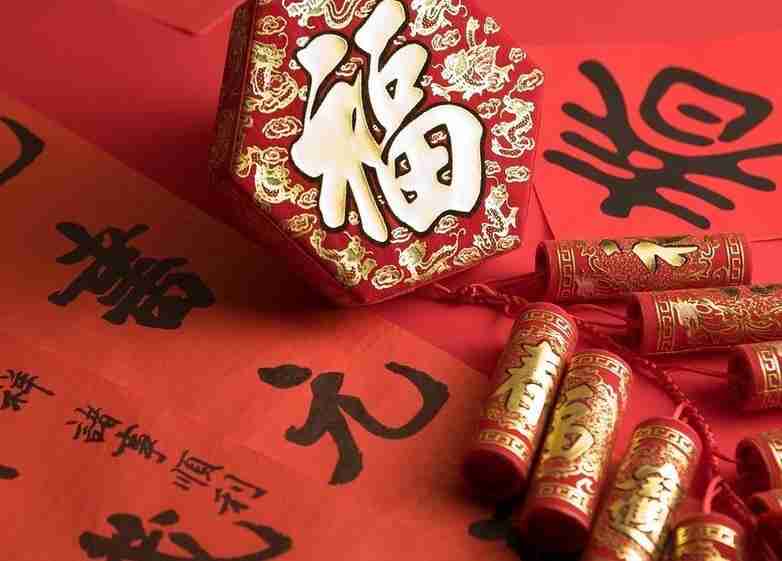
The Chinese New Year Festival is also referred to as the Lunar New Year and Spring Festival. As the name suggests, this is an annual celebration that marks the beginning of a New Year. There are two main objectives of this important Festival. The first one is to celebrate the hard work and achievements of the past year, and the second objective is to wish for luck and a prosperous New Year. It is believed that what you choose to do during the first days of the New Year will determine how lucky the entire year will be for you.
Chinese new year history:The Chinese New Year Festival, however, hasn’t always been celebrated in China. The earliest form of it can be traced back to the Warring States Period between 475BC and 221AD. During this time, the Qin State had an exorcism ritual called ‘Big Nuo’, which they performed annually during the last day of the year. The ritual became widespread when the Qin State united China and became the Qin dynasty. But it wasn’t until the Han dynasty that the first celebration of Chinese New Year was recorded. Originally celebrating Chinese New Year involved honoring ancestors. So, the Han would come together as a family on the first day of the first month to worship and commemorate their ancestors. Later the children would serve their parents some pepper wine and make a toast wishing them good health.
By the Jin dynasty, a New Year’s Eve tradition was introduced, called Shousui. It involved inviting others to your home for food and drinks (Bensui), gifting and wishing each other (Kuisui), and staying up all night until sunrise (Shousui). During the Northern and Southern dynasties, the practice of firing bamboo on the first morning of the New Year was established and became a common New Year tradition in ancient China. Around the Tang dynasty, people began the custom of sending out New Year Greeting Cards called Bai Nian Tie.
The hanging of couplets on the door was a custom founded during the Five dynasties and ten kingdom periods, while the use of firecrackers was widely adopted during the Song dynasty. It was also during the Song dynasty that people would gift money, called sui nian qian, to children during New Year. The eating of dumplings as a New Year’s tradition came later during the Ming dynasty. Although the customs kept evolving over the years, many of the traditions for Chinese New Year’s celebrations have been maintained to date.
Chinese New Year Story.
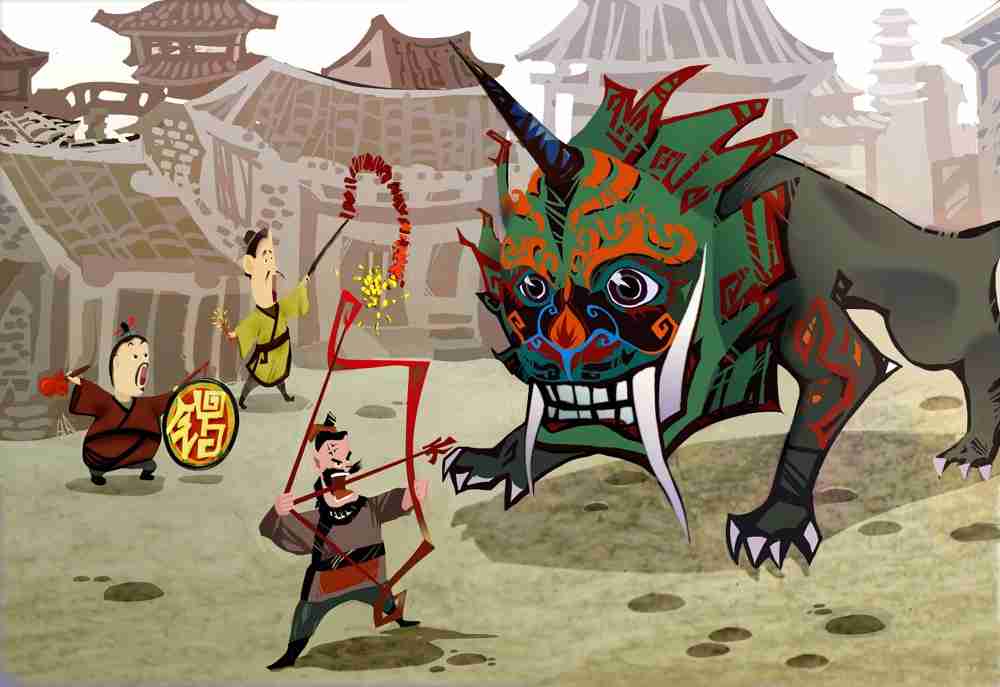
The Chinese New Year is steeped in legends, but there is one centuries-old legend that best explains the origin of the festival. According to the legend, the Chinese people would always plan to celebrate the Spring festival, but there was a mythical monster called Nian that would come to terrorize the villagers. The beast would appear every midnight before New year and destroy the village eating villagers, especially the children. As a result, the villagers were terrified of the Nian and were unable to celebrate the Spring festival. They chose, instead, to go into hiding so the Nian wouldn’t be able to harm them.
A wise old man named Yanhuang, however, refused to go into hiding. He was determined to stay the night and take revenge on the monster. In preparation for the coming of the Nian, he laid out red paper and set off firecrackers. When the villagers came back the following day, they found that nothing in the village had been destroyed. The Old man Yanhuang was also nowhere to be seen. As such the villagers assumed that he was a deity who was sent by the heavens to come and help them. They then realized that Yanhuang had found the beast’s weaknesses, which were loud noise and the color red.
As a result, when the New Year approached, the villagers would wear red clothes and put up red spring scrolls and lanterns outside their windows. They would also use firecrackers and loud drum noises to scare off the beast. From that moment on, the Nian never returned to terrorize the village. It retreated to a nearby mountain whose name has now been lost and was said to have been later caught by Hongjun Laozi, a Taoist monk.
When Is Chinese New Year?
Unlike the rest of the world where the New Year is always celebrated on January 1st, the Chinese New Year doesn’t have a constant date. It, however, comes around the Spring, hence the name Spring festival and falls between January 21st and February 20th. The exact date will change every year depending on the Chinese calendar which is based on the Moon’s orbit around the earth, which is also why the festival is referred to as the Lunar Year. The date will be the day of the second New Moon after the Winter Solstice.
Chinese New Year Calendar
The Chinese calendar is different from the Gregorian calendar from than majority of the world uses. While the Chinese calendar is based on the moon’s orbit around the earth, the Gregorian calendar is based on the moon’s orbit around the sun. People in China and regions heavily influenced by Chinese customs like Vietnam, Korea, and Japan, use the Chinese calendar.
Based on this Calendar, the month containing the Winter Solstice is considered the Lunar month and the eleventh month of the year. Based on that the Chinese New Year falls on the second new moon that occurs after the Winter Solstice, that’s roughly in two months. Over the years, 96% of the time, the Chinese New Year normally falls on the date closest to the new moon nearing the start of Spring (lichun) between 4-5 February, or the first new moon after the major cold (Dahan). The following is a table indicating the dates the New Year is likely to fall on in the next 10 years starting from this year and based on the Gregorian Calendar:
| Year | Suggested Date | Day of the week |
| 2021 | 12 February | Friday |
| 2022 | 1 February | Tuesday |
| 2023 | 22 January | Sunday |
| 2024 | 10 February | Saturday |
| 2025 | 29 January | Wednesday |
| 2026 | 17 February | Tuesday |
| 2027 | 6 February | Saturday |
| 2028 | 26 January | Wednesday |
| 2029 | 13 February | Tuesday |
| 2030 | 3 February | Sunday |
Notice that from 2021 to 2030, the Chinese New year is between January 21st and February 20th.
How Long Is Chinese New Year?
Perhaps the longest celebration in China, Chinese New Year normally lasts for 15 days, although technically the activities begin on New Year’s Eve. During these days there are many events and festivities included all based on the theme of ushering in the new year with luck and good fortune. The following are the major events and activities that take place during the 15-day celebrations:
Chinese New Year’s Eve.
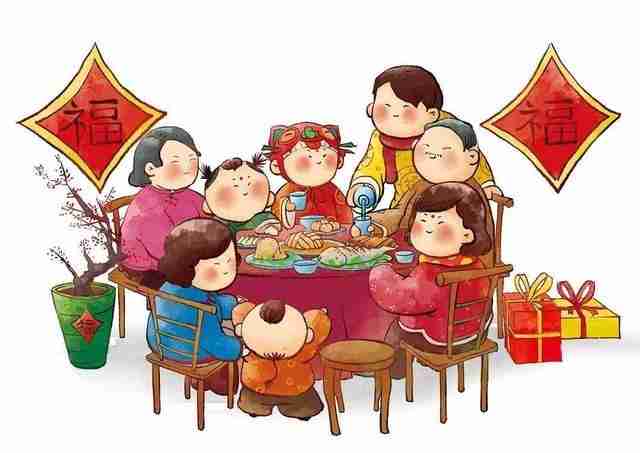
Although not counted as part of the days, this is an important day, as it is mainly about preparing to usher in the New Year. One way this is done is by cleaning and cleansing the house thoroughly, this is believed to get rid of the negative energy and make room for the good luck that would come with the new year. Some people believe that touching a broom and cleaning during the new year is a bad omen as you could be sweeping out the good luck.
The main event of this day, however, is the reunion of families. Families would gather together and have dinner which was almost similar to Thanksgiving in the US. After dinner, it is a tradition that the family should make dumplings together that they will eat at midnight. In some regions in the South, it is also customary to make Niángāo, which means New Year’s Cake, which the family will distribute to relatives and friends throughout the New Year.
After that, some hours to midnight, some families go to the temple to pray for a prosperous year and light the first incense or candle. Most families, however, nowadays host parties and count down to the new year. Firecrackers are then lit. Traditionally this was done to scare away evil in a ritual known as kāicáimén, meaning ‘opening the door of fortune’. In this ritual, the firecrackers will be lit with the doors closed and only reopened with the sunrise of the new morning.
First Day.
This first day is one filled with celebrations. It is an important day of welcoming the deities of heaven and earth and scaring away the evil spirits, starting from midnight. To do this it is a traditional custom to light fireworks, firecrackers, or burn bamboo sticks. They also have as much of a din as possible.
Another important reason for this day is to commemorate the ancestors and honor the elder in the family. That includes parents, grandparents, and great grand-parents. It is also on this day that juniors of the family are gifted red envelopes of money by their parents and the married couples in their families. Employers also give their employees their bonuses in red envelopes on this day as a way for good luck and a smooth year ahead.
Second Day.
This day is considered to be the beginning of the new year. Traditionally, it was one of the rare times married women could visit their biological parents as well as relatives and friends in their hometown. In the past imperial era, beggars and unemployed individuals had a custom of circulating from one household to another carrying a picture of the god of wealth and shouting ‘Cai Shen Dao!’ ‘The god of wealth has come!’. Each household would respond by gifting them ‘lucky money to thank them for the message.
Today, different groups of people have different customs that they perform on this day. The Cantonese business people, for example, offer the Hoi Nin prayer before starting their business on this day, because they believe that they will be blessed with prosperity and good luck. In Hong Kong, some believe that this day was the birthday of a deity called Che Kung. As such, believers would offer prayers in the temple on this day and ask for his blessings. A representative from the government would also perform kau cim, a ritual where he asked Che Kung about the city’s fortune in the new year.
Third-Day.
The day is also referred to as the ‘red mouth’ or Chiguo’s day, where Chiguo refers to the god of blazing wrath. Some believe that this day is the day of the poor devil and so everyone should stay at home and not have any guests. Traditionally, paper offerings would be made over a trash fire. Today, only rural areas still uphold this custom. This day is also said to be a good day to go to the temple and pray to the god of wealth.
Fifth Day.
This day is believed to be the birthday of the god of wealth birthday; therefore, people offer prayers and ask for blessing from him. On this day it is also a common practice for the Chinese to shoot firecrackers to ensure they gain the attention and favor of Guan Yu for the entire year.
Sixth Year.
This is Horse’s day. On this day, the Chinese drive out the ghost of poverty by throwing out the garbage that was accumulated during the festival. This ritual symbolizes the desire of the Chinese to send away the hardship and poverty they may have faced in the past year, so they can welcome the good life that comes with the new year.
Ninth Day.
Traditionally this day is believed to be the birthday of the Jade Emperor, ruler of the heavens, and is called Ti Kong Dan. To the Hokkiens group, this day is even more important than the first day of Chinese New Year. That is because, between the eighth and ninth day, the Hokkiens were spared from the Japanese massacre by hiding in a sugarcane plantation. So, at midnight every eighth day of New Year, Hokkiens show gratitude to the Jade Emperor by offering him sugarcane.
Fifteenth Day.
This marks the last day of the festival and it goes by many names including the famous Lantern Festival or Yuanxiao Festival or Shangyuan Festival. On this day, candles are lit outside homes to guide the wayward spirits home and families walk the streets carrying lit lanterns. This day is especially celebrated by Chinese individuals who are looking for romantic partners.
How To Celebrate Chinese New Year?
Celebrating the Chinese New Year is mainly about families coming together to usher in and celebrate the New Year. Schools and businesses in China, therefore, stop operating for the first few days of the Chinese New Year festival. That way everyone gets time to spend with their families.
In preparation for the festivities, families clean their homes, make dumplings and have dinner together. They also go to temples to offer thanks, prayers, and sacrifices, as a way of asking for blessings for the coming new year. Families also celebrated the New Year buy young ones honoring their elders and elders gifting the young ones with red envelopes of money, for luck.
The Chinese New Year celebrations are also characterized by many parades and performances, as well as people dressed up in traditional Chinese clothes. Fireworks and firecrackers are also set off during the celebration and drums are beaten because the noise and lights are meant to scare away evil spirits for the coming months of the year. People also get to enjoy a variety of delicious foods during this period. Finally, after two weeks of celebrating, the festival culminates with the lighting of lanterns during the lantern festival that marks the end of the Chinese New Year.
Who Celebrates Chinese New Year?
Although it is called the Chinese New Year Festival, this is a celebration that many people outside of China also celebrate. They include Asian cultures like Korea, and Vietnam. Of course, the celebrations in these countries go by different names.
In Malaysia and Brunei, the celebration is referred to as Tahun Baru Cina. In Vietnam, it is referred to as Vietnamese New Year same as in South Korea where they call it the Korean New Year. Some countries like Singapore, however also refer to the celebrations as Chinese New Year. Taiwan also calls the festivities the Spring Festivals or Lunar New Year like the Mainland China and in Hong Kong respectively.
Asian countries aren’t the only places where the Chinese New Year is celebrated. You’ll find that the festivities also occur in the Western world in regions like Europe and some parts of North America, including Canada. This is because these regions have Chinese immigrants who make up a notable percentage of their population.
In terms of activities conducted during the celebration, these also vary from region to region. Each culture has its customs that they perform based on their beliefs. There is also a difference in the duration of the celebrations. While in China the festival goes on for 15 days, in other regions, people resume their daily lives after 1-2days of the celebrations. In Indonesia, for example, only the first day of the Chinese New Year is considered a public holiday.
What Is Traditional Chinese New Year Food?
The Chinese New Year, as we’ve mentioned, is mainly about the coming together of families to give thanks for the past year while celebrating and ushering in a new one. That is why the reunion dinner is among the most important events that happen during New Year’s eve.
Family members would gather in or near the homes of their most senior members for the dinner. On that night and throughout the entire New Year celebrations, the Chinese enjoy delicious and traditional dishes. These dishes take precedence over others during this period because of their associations with good luck, wealth, prosperity, and so on. The following are some of the major traditional Chinese New Year food:
Dumplings.
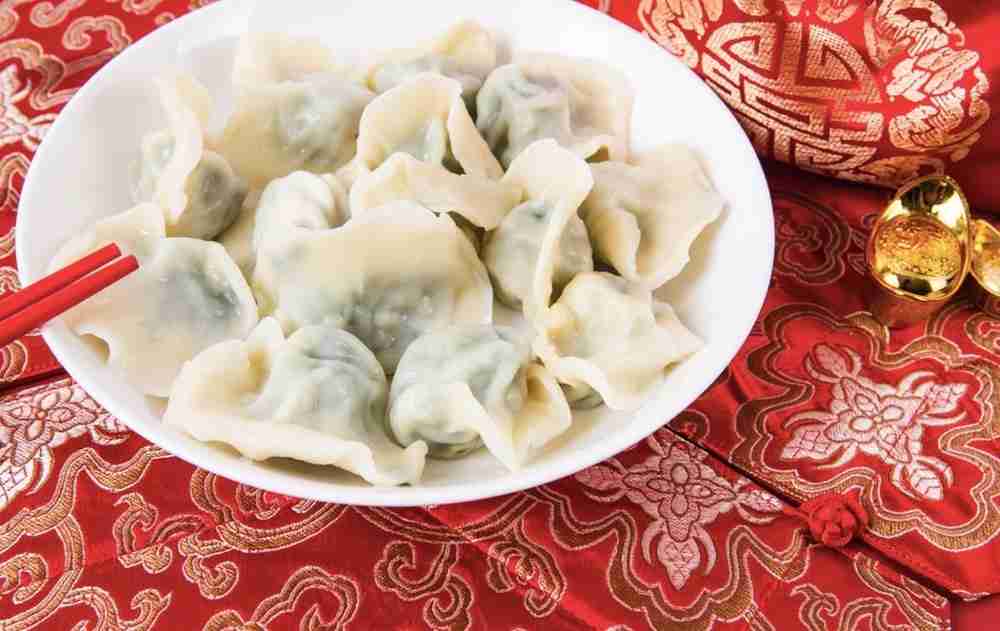
This is a very important dish for Chinese New Year and making them is a popular custom for all Chinese families during New Year’s Eve. The reason for their importance is that dumplings are shaped like ingots, which was an old Chinese currency. By serving and eating dumplings during New Year’s celebrations, the Chinese express their desire to receive wealth in the coming New Year.
Noodles.
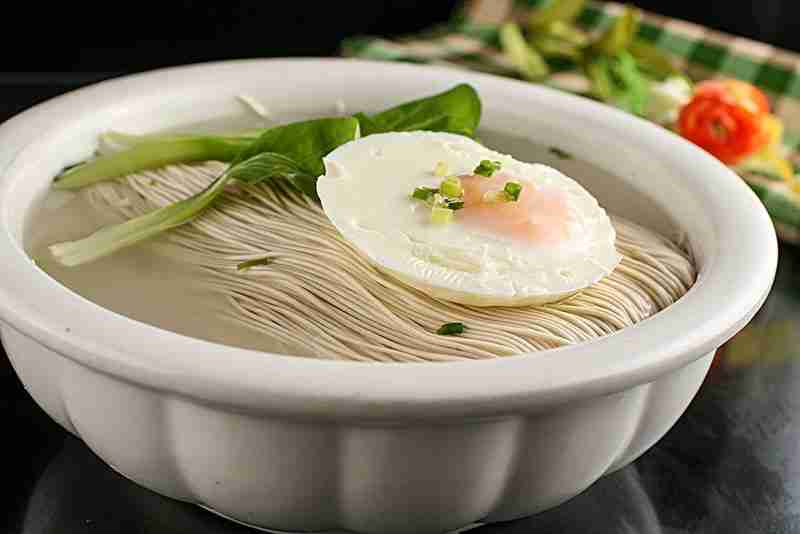
Noodles are another important dish during New Year and also during birthdays. Given how long and continuous they are, noodles in China represent longevity, which is why they are served during New Year. They are an expression of the desire and wish to live long healthy lives in the coming years. The noodles cooked during this festival, are usually longer than normal.
Nian Gao.
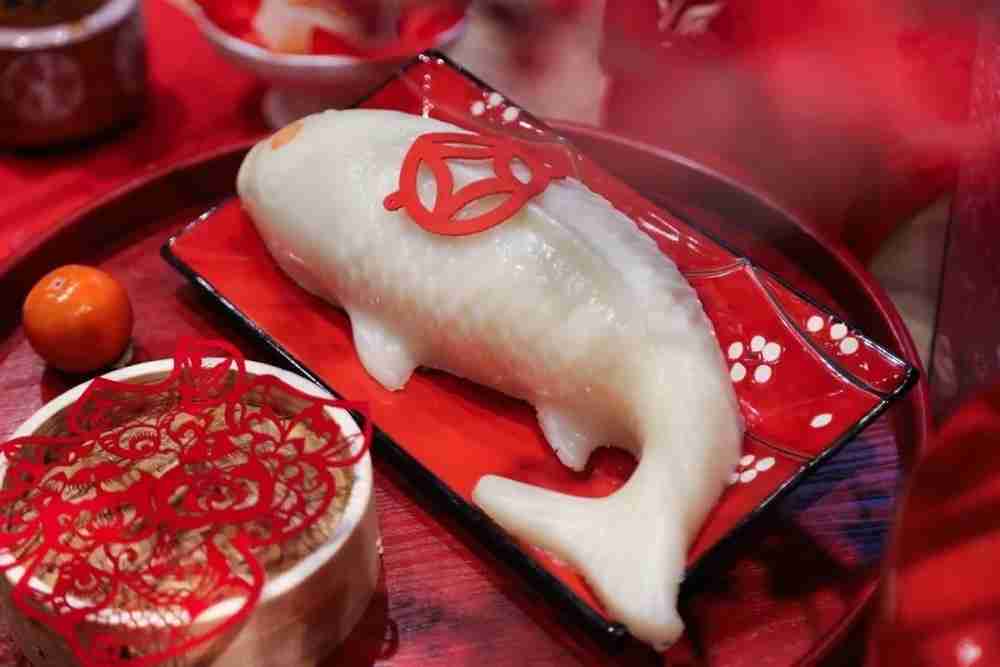
This means New Year’s Cake. This dish is made from glutinous rice and is another important dish. Some cultures have a mandatory custom of preparing it on New Year’s Eve so that slices of it can be sent to relatives throughout the celebrations. The reason why Nian Gao is especially important during New Year is because of the Kitchen god in every household. Legend has it that each household has been assigned a Kitchen god by the Jade Emperor to observe and report back to him all the deeds of the household. The report given would determine how blessed or difficult the new year would be for the household. To avoid getting a bad report, the families leave out Nian Gao or Gao to bribe the kitchen god, so that their mouths are too sticky to give a report.
Ducks.
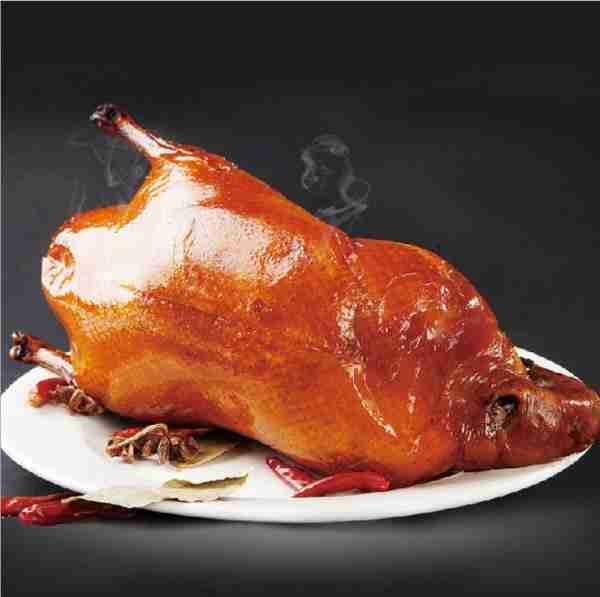
These are viewed as symbols of fertility in Chinese culture, therefore are important dish during new year’s, especially for couples who seek to have children in the coming new year. Eating duck-based dishes during new year’s celebrations also expresses a wish for abundance and a good harvest in the coming year.
Fish.
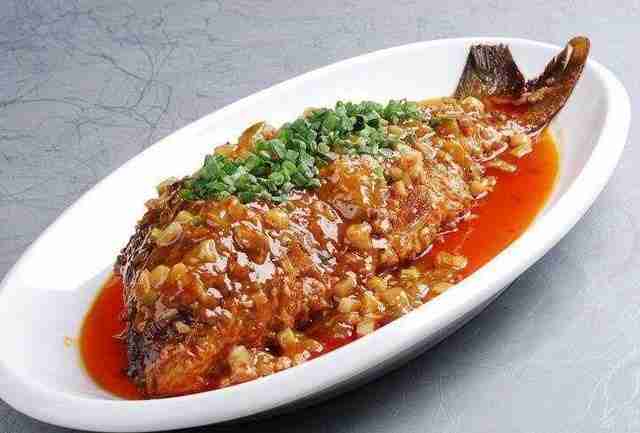
This is another dish that symbolizes abundance in Chinese culture. The word for fish in Chinese is a homophone for the Chinese word for surplus. Fish is therefore among the staple traditional foods during the new year’s. It represents the wish to always have an abundance during the New Year.
Bok Choy.
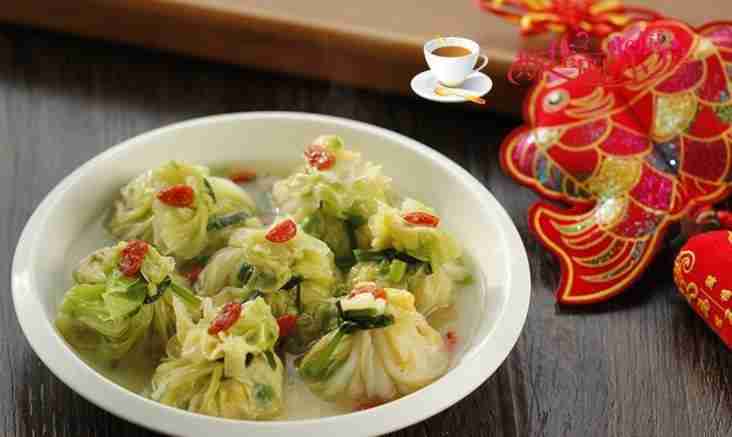
Another symbol of wealth is this vegetable, whose green color is seen as a representation of money. Eating bok choy on New Year’s is a wish for wealth and prosperity in the coming year. It is also the perfect vegetarian dish when served with black mushrooms. It’s especially a great dish on the first day of Chinese New Year, for the Chinese who still observe the tradition of not eating meat on the first day of the celebrations.
Clothes For Chinese New Year.
Aside from food and decorations, the clothes that the Chinese wear on New Year’s is also significant. Given the traditional belief that red is meant to scare aware evil and attract good luck, the Chinese wear red clothes throughout New Year’s. They believe that this will protect them from evil spirits and bad luck.
Another clothing custom is wearing new clothes. This symbolizes new beginnings with the coming new year. It also indicates that one has an abundance of enough things to use in the duration of the coming year.
Chinese New Year Symbols.
Everything about the Chinese New Year is symbolic. From the customs, food, decorations, and events. The following are some of the most important symbols when it comes to Chinese New Year:
Red.
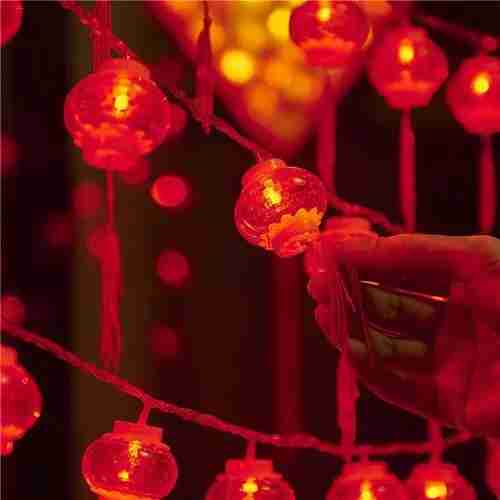
The color red is an auspicious color in Chinese culture. It is a symbol of life and prosperity and therefore seen as a lucky color. The Chinese also believe that red can be used to keep evil at bay. That is why red is the dominant color during the Spring Festival celebrations. It is incorporated as a way of warding off bad luck and welcoming wealth and long life with the coming year.
Lanterns.
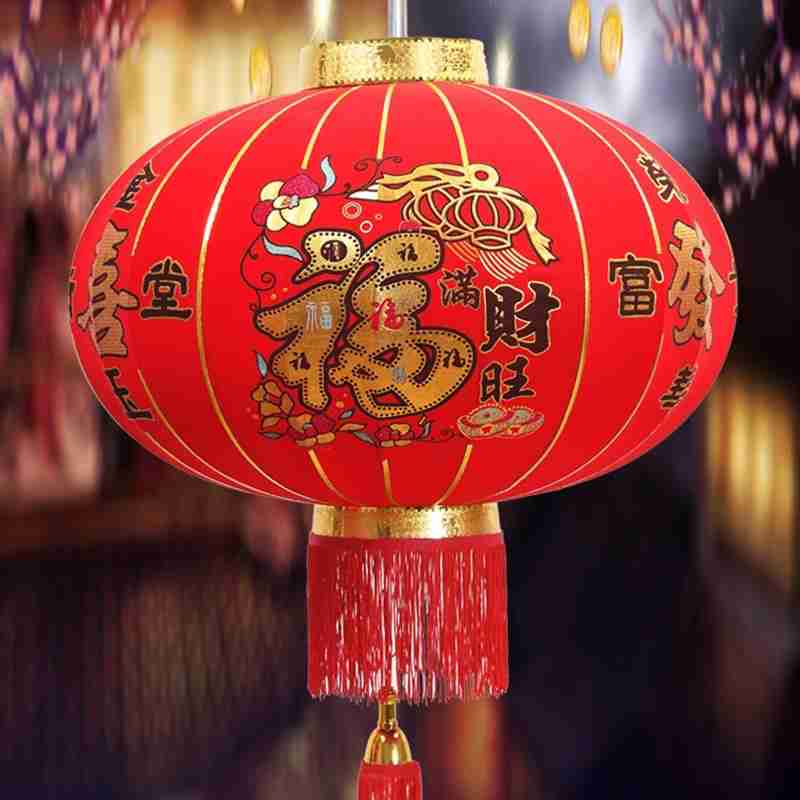
These are an integral part of Chinese culture and are used in many of their events. The lanterns in Chinese New Year are different from those used during the Mid-Autumn festival. These particular lanterns are red and are normally oval-shaped. The Chinese use to decorate outside their homes to scare away evil spirits. They are also used to celebrate the Lantern Festival which marks the end of the New year celebrations.
New Year Decorations.
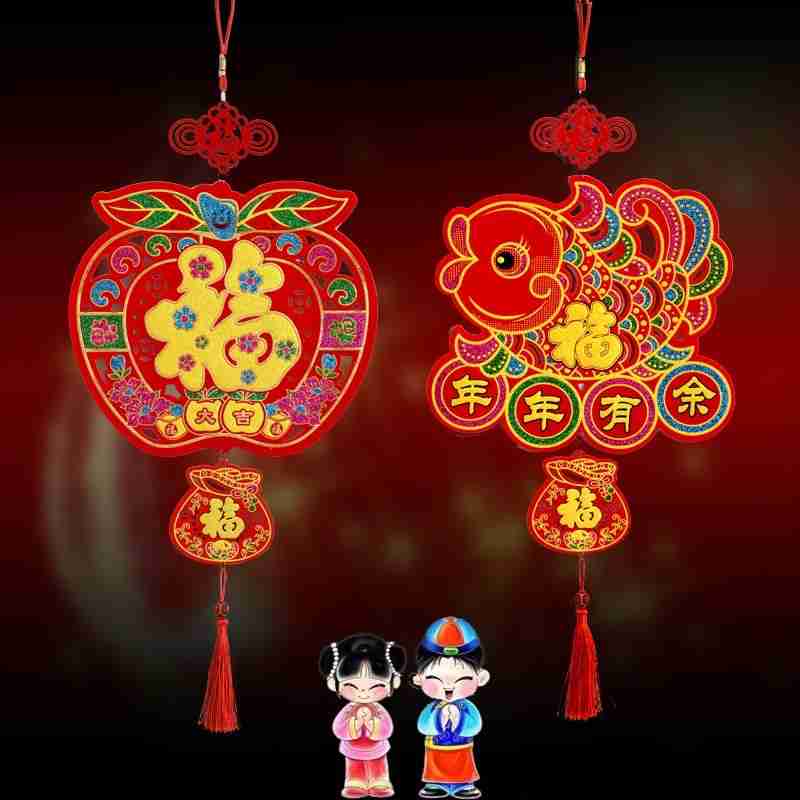
Most of the decorations hung during New Year’s are to convey greetings and best wishes during the festivities. Paper-cuttings are a common decoration around this time. Some are shaped like fish because fish symbolizes abundance in Chinese. Other decorations include Chinese knots, couplets, and New Year pictures. These decorations are either hung on the doors, walls, or windows of one’s home and/or business.
Dragon and Lion Dance.
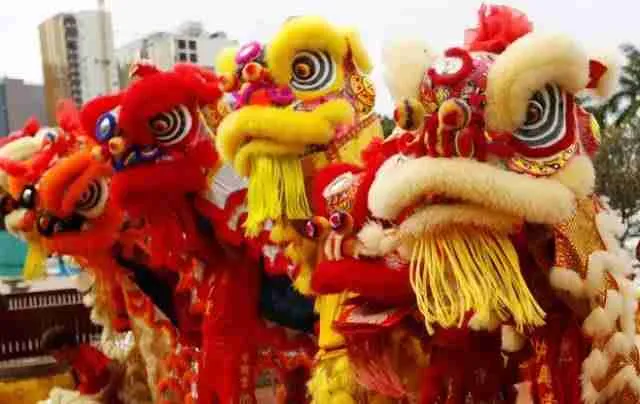
These two dances are common forms of entertainment during the Lunar New Year. They are also highly symbolic and meant to drive away evil and invite luck. The Chinese believe that the loud drums and deafening cymbals, coupled with the dragon and lion faces are sufficient enough to scare off evil spirits. The lion dances are especially popular in Hong Kong and Macau just before businesses are reopened for the New year.
How Many Chinese New Year Animals Are There?
The Chinese calendar is represented by Chinese animal zodiacs based on a 12-year cycle. That means that they are 12 animals, each representing one year. The following are the 12 zodiacs and their significance:
Rat.
The first of the twelve zodiacs, Despite the negative outlook most people have about rats, in China, they are seen as curious, smart, and resilient with the ability to adapt to any environment. Those born in this year are said to be successful, sociable, hence popular, thoughtful, and resourceful. They have an acute sense of observation and a flexible mind. They however lack courage and can be very picky.
Ox.
The Ox is said to be strong, patient, and fair-minded. They can also be stubborn and lack when it comes to proper communication. People born in the year of the Ox are said to be dependable and trustworthy people. They are also hard workers and very industrious. They never rush into making decisions and are very cautious, therefore they never regret their choices. The downside is, because of the Ox’s traditionalist nature, these people can be authoritative towards others.
Tiger.
This mighty cat is said to be strong, courageous, and loyal. People born in the year of the Tiger are therefore considered trustworthy individuals, with great communication skills. They welcome challenges and thrive when under pressure. Such people can however be overconfident, impulsive, and unpredictable. While they will perform each task enthusiastically and effectively, they prefer to do it alone so nothing goes wrong.
Rabbit.
These adorable creatures are said to be conservative and gracious. They don’t like chaos and prefer a tranquil environment. If you’re born this year, you are likely compassionate, modest, and have a great sense of humor. You’re however overly emotive and can be insecure and pessimistic.
Dragons.
They are highly auspicious and revered mystical creatures in China. They are said to be energetic and full of vitality. Those born in this year are said to be romantic and ambitious. Such people are self-assured, idealistic, and always striving for perfection. The flip side, however, is such personalities could be arrogant and irritable, therefore intimidating. But they forgive you just as quickly as they lose their temple.
Snake.
In most cultures snakes are viewed as deceptive creatures, in China, they are seen to be wise creatures maintaining an even temper. People born in this year are said to be self-aware, sympathetic, passionate, and charming with their innate wisdom and beauty. They can however be headstrong, jealous, and can even be deceptive if it means getting what they want.
Horses.
Who doesn’t love them? They are easy-going creatures that are energetic. Those born in this year are said to be hardworking, warm-hearted, generous, and great money handlers. They are also very perceptive and think quickly. Such people can however also be rushed in their decisions and hot-tempered.
Goat/Ram.
Sometimes this zodiac is interchanged with sheep and is the most loved zodiac sign. People born in this year are said to be artistic, kind, loving, caring, and polite with good mothers. They are also considered to be the perfect nurturers and homemakers. Such personalities can also be insecure, sensitive, and shy.
Monkey.
Monkeys are charming and sociable creatures, always having a trick up their sleeves. If you’re born in this year, you’re considered to be athletic, versatile and creative in various situations, and self-assured. You are intelligent and often become a master of anything you try out while thriving in the face of challenges. You can also be suspicious, jealous, and selfish.
Rooster.
We all know them for their wake-up calls each morning, especially if you’ve ever been to a farm. In China, they are considered punctual and bright creatures. Those born in this year are said to have dashing looks, paying close attention to their clothes and appearance. They are also honest, warm-hearted, and like to keep themselves busy. Such people can also be overly critical, and love to debate and argue but aren’t good at being tactful about it.
Dog.
Also known as man’s best friend in western cultures. In China, they are also considered faithful, courageous, and trustworthy companions. People born in the dog years are said to be loyal, protective, selfless and the first to speak out against wrongdoings. They can however be defensive, judgmental, and panicky when afraid.
Pig.
The last but equally significant zodiac sign. People born in this year are optimistic and blunt. They are intellectuals with a natural thirst for knowledge and are considered people of integrity. Because of their optimism, however, such personalities can be naïve and overly trusting, therefore can be easily fooled.
Chinese New Year Taboos And Superstitions.
Chinese New Year is all about welcoming luck and fortune with the new year. Therefore, everything that is done is based on this. The first five days of the celebrations are extremely precious, and filled with many taboos and superstitions. It is believed that your actions within these five days will determine how lucky your year will be. The following are some of the major taboos and superstitions had about this festival:
Taboos.
- Avoid mentioning unlucky words like illness, poverty, or loss, otherwise, they will follow you throughout the year.
- Don’t scold children, otherwise, they’ll be naughty and you’ll scold them throughout the entire year.
- Don’t be sad or grieve, it may become a part of your entire year.
- Don’t sweep, clean, or throw out the trash until the fifth day.
Superstitions.
- The color red and loud sounds scare off evil and negative energy.
- Offering New Year’s Greetings to someone in bed may lead to them being bedridden an entire year.
- Afternoon naps during New Year’s indicate laziness throughout the year.
- Urging someone out of bed during New Year’s means they’ll be rushed the entire year.
Chinese New Year Vs Christmas (The Difference)
When you think about it, Christmas and Chinese New Year’s share certain similarities. Both are great and important celebrations. Christmas is important in the Western world and across most other countries, while The Lunar New Year is an important festival in China. As such, their preparations are always well in advance. Both celebrations are also about the coming together of the family to share in delicious feasts. In both children are also gifted with presents although they differ in terms of the type.
Still, there are many differences between these two major events. Among them is the fact that the Chinese New year is an ever-changing date while Christmas is constantly on the 25th of December. Christmas stemmed from the need to celebrate the birth of Jesus, while Chinese New Year originally was about honoring ancestors before it became about celebrating the New Year. The customs performed during the New Year are different from those of Christmas. While kids get presents like toys for Christmas, during the Chinese New Year, kids receive envelopes of lucky money. Last but not least even the decorations of the two events differ, although both incorporate red into the celebration.
Conclusion:
As you’ve seen the Chinese New Year is an important event in China. It is the perfect time of the year to visit and indulge yourself in the country’s rich culture and learn more about them and their beliefs. You will also get to witness the dragon and lion dances, as well as, enjoy many delicious and traditional cuisines. Just make sure you plan your itinerary well in advance, as most flights and hotels will be booked closer to the festival.